In today’s fast-paced world, meaningful communication is more vital than ever. As leaders, executives, and communicators, we strive not only to convey messages but to truly connect with our audiences. Two key components of impactful communication are vulnerability and storytelling. These elements, central to the Ramey Method, harness the power of human connection through emotional engagement and authenticity. A fascinating aspect of this process involves the role of oxytocin, often referred to as the “bonding hormone,” which plays a crucial role in forming trust and connection.
The Science Behind Vulnerability and Connection
Oxytocin is a hormone and neurotransmitter that significantly impacts social bonding, trust, and empathy. When we experience genuine moments of connection—through touch, eye contact, or heartfelt communication—our bodies release oxytocin, fostering feelings of closeness and trust.
Vulnerability is critical to triggering the release of oxytocin. When we open up and share our authentic selves—our struggles, fears, and triumphs—we invite others into our world, creating a sense of shared experience and understanding. This openness and honesty are powerful signals that build trust, making others feel safe to share their own experiences and emotions.
Why Vulnerability Matters in Communication
Vulnerability is often misunderstood as a sign of weakness, yet it is a powerful force that can transform how we connect with others. Showing vulnerability can:
1. Build Trust and Connection: When we allow ourselves to be vulnerable, we reveal our authentic selves, fostering a sense of trust and connection with our audience. This trust is rooted in the biological response triggered by vulnerability—namely, the release of oxytocin, which deepens bonds and enhances empathy.
2. Encourage Openness: Vulnerability invites reciprocity. When you share openly and honestly, it encourages others to do the same. This creates a positive feedback loop, where openness begets openness, fostering a culture of transparency and connection.
3. Humanize Leadership: As a leader, demonstrating vulnerability helps break down barriers and humanizes your role. It allows others to see you as a relatable, authentic individual who faces challenges and learns from them, just like everyone else.
The Role of Storytelling in Building Connection
Storytelling is a timeless and universal way to communicate. It transcends cultures and time, engaging listeners in a way that few other forms of communication can. Stories have the power to create emotional connections, making them a vital component of the Ramey Method. Here’s why storytelling is so effective:
1. Triggering Oxytocin and Emotional Resonance: Stories that involve emotional elements—such as personal anecdotes, challenges, or moments of triumph—can trigger the release of oxytocin in the brain. This hormonal response fosters empathy, enhancing the connection between the storyteller and the listener.
2. Making Messages Memorable: Our brains are wired to remember stories more than abstract data. A compelling story captures attention and embeds itself in the listener’s memory, ensuring your message is not just heard but retained.
3. Simplifying Complex Ideas: Stories can break down complex concepts into relatable and understandable narratives. By framing your message within a story, you make it more accessible and engaging for your audience.
Integrating Vulnerability and Storytelling with the Ramey Method
The Ramey Method emphasizes the importance of using vulnerability and storytelling to forge deeper connections in communication. Here’s how to harness these tools effectively:
1. Share Personal Stories That Highlight Vulnerability
Reflect on moments that showcase your authenticity and vulnerability. These stories don’t need to be dramatic; they should be genuine and relatable. Sharing moments when you faced challenges or made mistakes invites empathy and trust, allowing your audience to connect with you on a deeper level.
2. Be Intentional with Your Authenticity
Vulnerability requires courage and intentionality. It involves sharing not just your successes but also your fears and uncertainties. This authenticity is key to building trust and fostering meaningful connections. The Ramey Method encourages you to be deliberate about your openness, focusing on how it can serve to build relationships and inspire others.
3. Focus on Emotional Storytelling
When telling a story, emphasize the emotional journey. Describe how you felt during each phase of the experience—before, during, and after the key events. This emotional transparency helps trigger oxytocin, deepening the connection with your audience. The Ramey Method highlights the importance of empathy in storytelling, allowing you to connect with your listeners on a profoundly human level.
4. Align Stories with Core Messages
Your stories should reinforce your core messages and values. Choose narratives that align with your goals and resonate with your audience. The Ramey Method teaches that every story should have a clear purpose—whether it’s to inspire, educate, or build rapport—and that purpose should be evident to your audience.
5. Practice Vulnerability Gradually
If vulnerability feels intimidating, start small. Share a minor personal story or a brief insight into your life. As you become more comfortable, gradually open up about more significant experiences. This gradual approach helps build your confidence in sharing and allows you to witness firsthand the positive impact of vulnerability on your connections.
Conclusion: The Transformative Power of Vulnerability and Storytelling
Incorporating vulnerability and storytelling into your communication is not just about sharing; it’s about creating a space where genuine connection and trust can flourish. By leveraging the science of oxytocin and the art of storytelling, the Ramey Method empowers you to communicate more effectively, fostering deeper relationships and making a more significant impact.
Embrace your vulnerability, share your stories, and witness the profound connections you can create. Your authentic voice is your most powerful tool—use it to connect, inspire, and lead.


